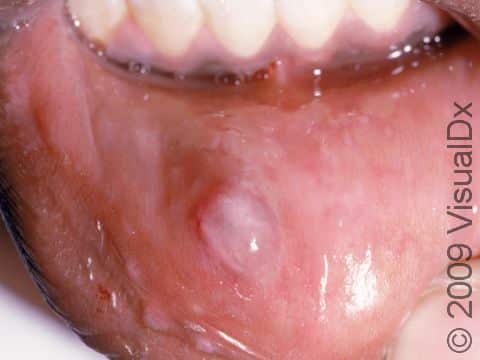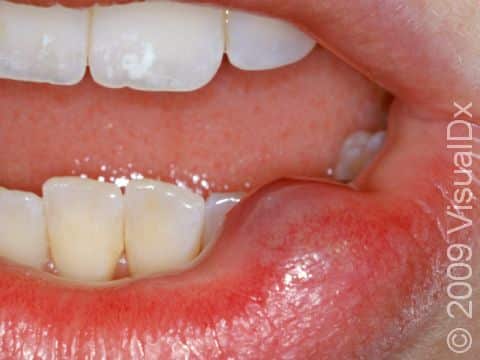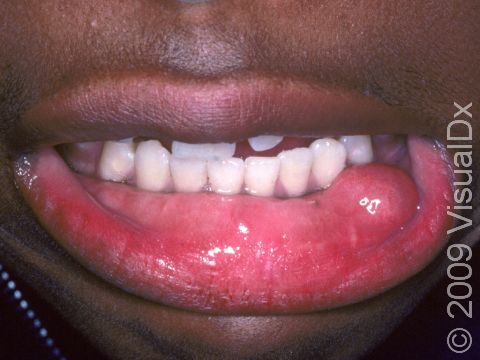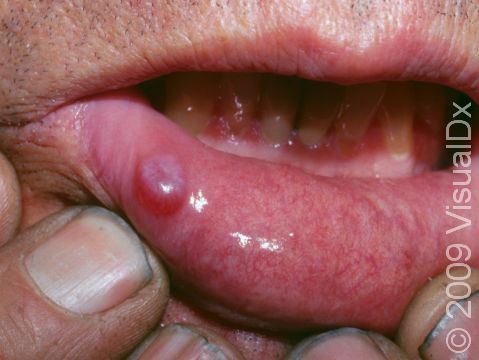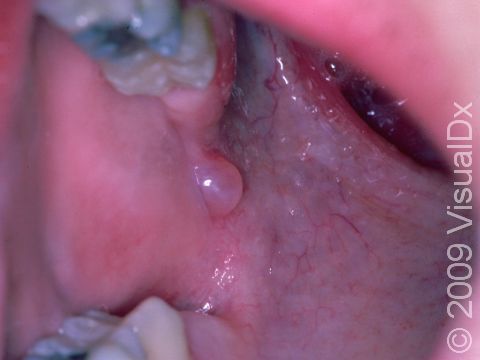Oral Mucocele
An oral mucocele is a common harmless, cyst-like swelling of the lip or mouth lining (mucosa), usually caused by an injury or blockage of a salivary gland.
Who's At Risk?
Mucoceles occur most commonly in children and young adults. There may be a history of injury to the area or lip biting.
Signs & Symptoms
Mucoceles usually occur on the lower lip or inner lining of the cheek, as these are frequent areas of mouth trauma, but mucoceles can occur anywhere inside the mouth. A mucocele is usually a single papule (a small, solid bump) or nodule (a smooth, raised bump) that is either the same color as the mucosa or slightly bluish. Mucoceles vary in size from 1 mm up to several centimeters. They are soft and typically painless. Mucoceles can come back (recur), especially if there is repeated injury to the area, such as biting the lips / inside the cheeks.
Self-Care Guidelines
Most mucoceles will go away on their own in 3-6 weeks. Avoid the habit of chewing or sucking on the lips or cheek when these lesions are present, and try to stop these habits to avoid recurrent mucoceles.
Treatments
If the medical professional is not sure of the diagnosis, they may do a biopsy. Usually no treatment is necessary, but the medical professional may recommend minor surgery to remove the mucocele or a procedure to drain it.
Visit Urgency
See your medical professional if the mucocele persists for over 6 weeks or if it gets bigger, bleeds, interferes with talking or chewing, or is painful.
References
Jauch EC, Hall G, Knoop KJ. Mucocele. In: Knoop KJ, Stack LB, Storrow AB, Thurman R, eds. The Atlas of Emergency Medicine. 5th ed. McGraw-Hill; 2020.
Saavedra AP, Roh EK, Mikailov A. Disorders of the mouth. In: Kang S, Amagai M, Bruckner AL, Enk AH, Margolis DJ, McMichael AJ, Orringer JS, eds. Fitzpatrick’s Dermatology. 9th ed. New York, NY: McGraw-Hill Education; 2019.
Koutlas IG. Diseases of the oral cavity. In: Soutor C, Hordinsky MK, eds. Clinical Dermatology. New York, NY: McGraw-Hill; 2013.
Last modified on June 24th, 2024 at 11:11 am

Not sure what to look for?
Try our new Rash and Skin Condition Finder

